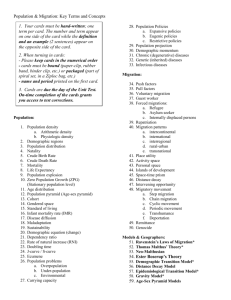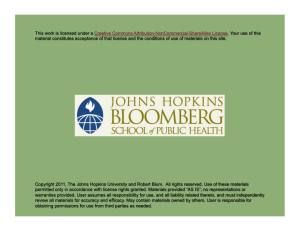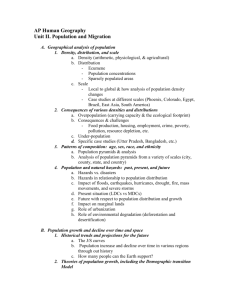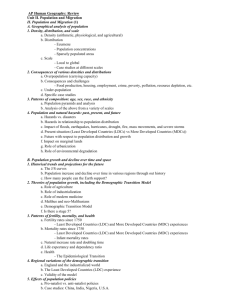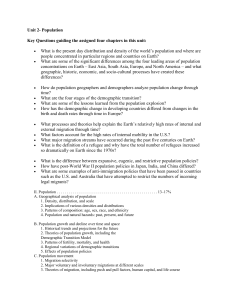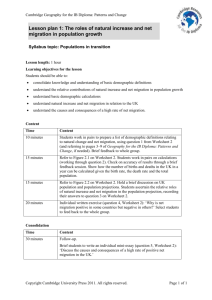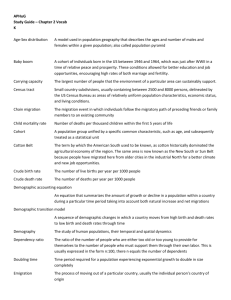Class Outline: Chapter 3 – Population
advertisement
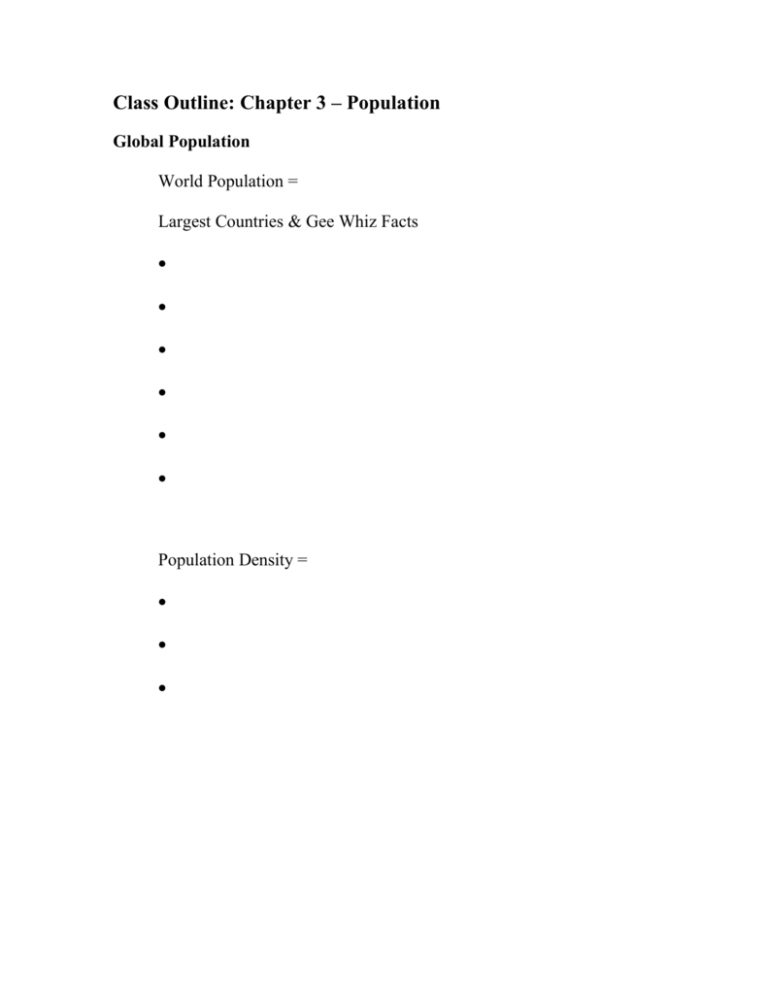
Class Outline: Chapter 3 – Population Global Population World Population = Largest Countries & Gee Whiz Facts Population Density = Factors Affecting Population Distribution 1. Environment 2. Economic Factors 3. Historical/Political Factors 4. Demographic Factors 5. Urbanization Urbanization = Correlates with Urbanization (Benin vs. Belgium) Population Growth Over Time & Space Fundamental Demographic Equation Crude Birth Rate: Crude Death Rate: Rate of Natural Increase Doubling Time (“Rule of 70”) Population vs. Resources (Thomas Malthus) Malthus could not predict: Theory of Demographic Transition (Population Change over Time) Stage 1 – Low Growth: Stage 2 – High Growth: Stage 3 – Decreasing Growth: Stage 4 – Low Growth: Population Pyramids: What do they tell us about demographic transition? Human Migration: Population Change Over Space What is it? Migration Trends and Patterns Major Issues in Migration 1. Who Moves? a. b. c. d. e. 2. Why Move?: Push & Pull Factors Push Factors Pull Factors 3. Where Do People Move? (Direction of Migration Flow) Classical Theory of Labor Migration Assumptions: 1. Wages are the primary motivating factor in migration 2. Workers have perfect (good) information about prevailing wage rates in other regions. 3. There is free mobility between regions -- No barriers to movement. 4. Workers also accurately incorporate other costs into their migration decision - Costs of moving - Transactions costs (selling property, search costs) - "Psychic costs" (cost of leaving family/friends, familiar surroundings, etc.) 4. Impact of Migration on Origin and Destination (Note: Assume move from Region A to Region B) Impact on Region A Impact on Region B Age Death Rate Birth Rate Education Note: Retirement migration has exactly the opposite effect as above.
